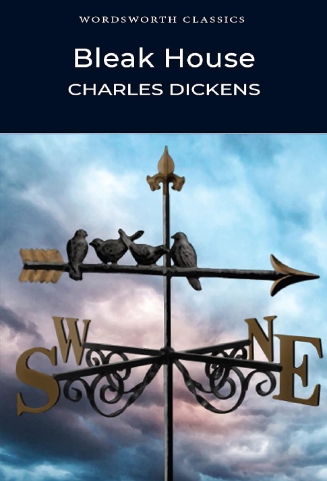Bleak House

Bleak House by Charles Dickens, first published in serial form between 1852 and 1853, is one of the author's most sophisticated and intricately plotted novels. The narrative revolves around the interminable court case of Jarndyce and Jarndyce, a Chancery suit over an estate that has dragged on for generations, affecting all who become entangled in its web.
The story is told through a dual narrative structure: the omniscient third-person perspective and the first-person account of Esther Summerson, one of the novel's central characters. Esther, an orphan with an obscure past, is taken under the wing of the benevolent John Jarndyce, one of the parties involved in the Chancery suit. She becomes the companion to Ada Clare and Richard Carstone, wards of the court also connected to the case.
As the novel unfolds, we encounter a diverse array of characters, each with their own connection to the Jarndyce and Jarndyce case. These include the impecunious but hopeful Richard, who becomes increasingly obsessed with the lawsuit; the beautiful and naïve Ada; the sinister lawyer Mr. Tulkinghorn; the enigmatic and tragic Lady Dedlock, whose secret past is a pivotal element of the story; and the relentless detective Mr. Bucket, among many others.
The novel delves deeply into themes of social justice, the inefficacy and corruption of the legal system, and the disparities between the wealthy and the poor. Dickens paints a vivid picture of Victorian England, from the squalor of the slums to the grandeur of the aristocracy, and uses the characters' interwoven lives to critique societal ills and champion reform.
The novel's intricate plot, filled with mystery, suspense, and drama, keeps readers engaged from beginning to end. The unraveling of Lady Dedlock's secret and the resolution of the court case provide a compelling narrative drive.
Dickens is renowned for his ability to create memorable and multi-dimensional characters. In Bleak House, each character, from the noble John Jarndyce to the despicable Mr. Smallweed, is vividly drawn and contributes to the novel's rich tapestry.
The novel is a scathing critique of the British legal system and social inequalities of the time. Dickens uses the story of Jarndyce and Jarndyce to highlight the inefficiency, corruption, and human cost of the Chancery court, making the book not only an engaging read but also a powerful social commentary.
The dual narrative structure adds depth and complexity to the storytelling. Esther's personal, introspective narrative contrasts with the broader, more detached third-person account, providing multiple perspectives and a fuller understanding of the plot and characters.
Dickens's descriptive prowess shines in "Bleak House." His detailed depictions of foggy London streets, decaying mansions, and bustling legal offices create a vivid and immersive setting that enhances the story's mood and themes.
The novel explores a wide range of human emotions and relationships. From Esther's journey of self-discovery and growth to the tragic downfall of several characters, Dickens captures the emotional complexity of his characters' lives, eliciting empathy and engagement from readers.
Bleak House is a masterful work that showcases Charles Dickens's storytelling genius. Its compelling plot, rich characterization, incisive social critique, and atmospheric descriptions make it a timeless classic. Whether readers are drawn to its legal intrigue, its vivid portrayal of Victorian society, or its emotional depth, "Bleak House" offers a rewarding and unforgettable reading experience.